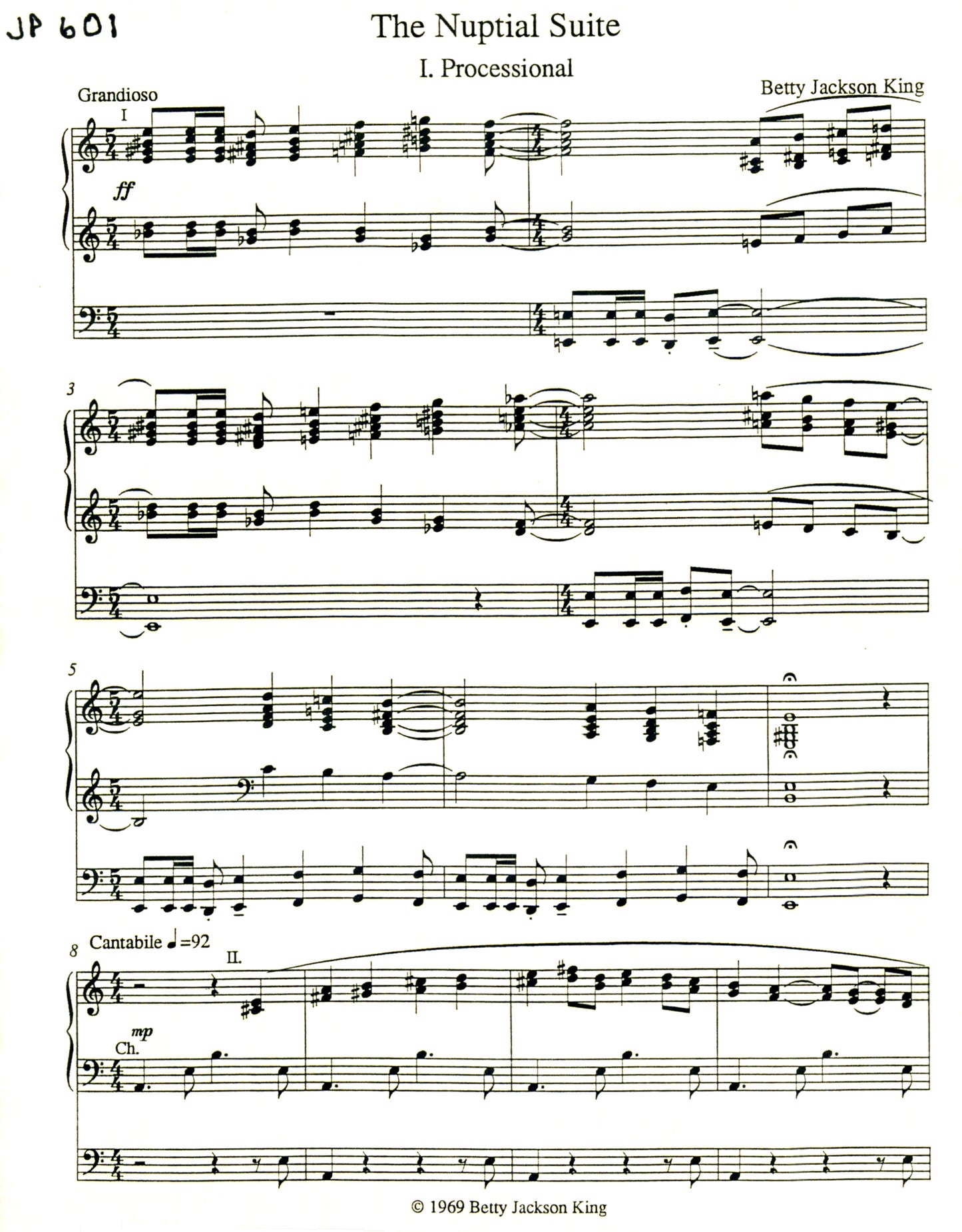

Video
Video
Historical Narrative
King’s writing reveals her characteristic approach to tonality: she avoids fixed key signatures, instead shaping her harmonic progressions through fluid chromatic motion and the judicious use of accidentals. This technique lends the music a sense of freedom and immediacy, allowing each movement to move organically between moments of brightness, warmth, and introspection. The Nuptial Suite stands as a testament to King’s compositional sophistication, where classical design meets heartfelt devotion.
Registration Overview
The Registration chart, edited by Oland P. Gaston (AGO), demonstrates King’s attention to tonal contrast and expressive nuance. Each general combination (Gen. I–V) outlines coloristic possibilities for changing moods within the suite:
Gen. I: Full organ sound without reeds, evoking majesty and brilliance.
Gen. II–III: Celeste, flute, and oboe/tremulant stops create warmth and lyricism for reflective passages.
Gen. IV: Firm foundation stops and mixtures provide the broad, resonant tone required for recessional grandeur.
Gen. V: Clarinet or oboe colors for gentle expressivity and softer inner movements.
These details affirm King’s understanding of registration as both structural and emotional—integral to shaping the suite’s flow from solemnity to celebration.
Musical Description
I. Processional
Without key signature
Marked Grandioso, the opening movement introduces a stately procession theme characterized by bold, declamatory chords and steady rhythmic motion. The grandeur is achieved through rich pedal tones and full manual textures, enhanced by King’s use of chromatic inflection to create harmonic color. Alternating dynamic levels—from commanding ff to reflective mp—provide architectural contour and musical depth. The absence of a fixed key signature allows the harmonic language to shift naturally, symbolizing both the dignity and emotional anticipation of the wedding ceremony.
II. Nuptial Song (Meditation)
Without key signature
Marked Lento (♩ = 63), this movement serves as the lyrical heart of the suite. Its melodic lines unfold with quiet grace over sustained harmonies, evoking a sense of devotion and tenderness. King’s selective use of sharps, flats, and naturals creates gentle harmonic tension and release, suggesting the fluid motion of prayer or reflection. The delicate interplay between manuals and pedal, often featuring chime-like tones, conveys tranquility and spiritual warmth. Its adaptability and expressive simplicity have made it one of King’s most widely performed works, valued for both its intimacy and universality.
III. Recessional
Without key signature
Marked Brisk and Maestoso, the final movement closes the suite with rhythmic vitality and jubilant brilliance. The driving pulse, reinforced by strong pedal articulation, propels the music forward in a spirit of joyful affirmation. The harmonic design, though free of a traditional key center, employs carefully placed accidentals to shape moments of brightness and resolution. The alternation between forte passages and brief poco ritardando phrases creates an effect of grandeur balanced with grace. The closing measures, resounding with full organ registration, leave an impression of celebration and unity.


